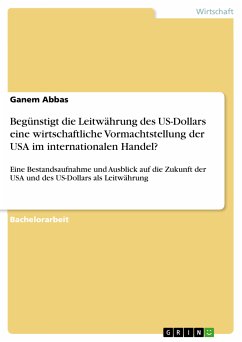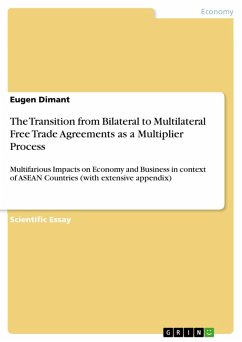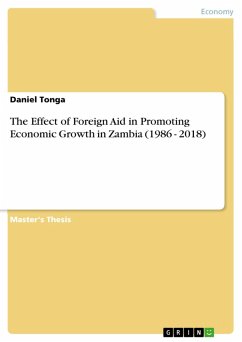Bachelor Thesis from the year 2018 in the subject Economics - Other, grade: 1,0, University of Frankfurt (Main), course: VWL - Spieltheorie, language: English, abstract: This thesis applies a game theoretical approach to analysing the potential outcomes of the current trade war between the U.S. and China. The impact of tariffs on the American steel industry, as well as the Chinese soy bean industry will be predominantly examined. This is done by introducing a new expansion on Rubinstein's Bargaining Model of 1982 in order to replicate the interaction between the U.S. and China. First, within Chapter 2, the thesis explains how a trade war is characterized, as well as the historic and current relationship between the U.S. and China. In this context, the starting point for later calculations is set. In Chapter 3, the original Rubinstein Bargaining Model and its underlying classic game is described and explained. In this thesis, two sub-models are considered: The Fixed Cost Model and the Fixed Discounting Factor Model. These are firstly defined within the original framework and secondly developed further to fit the Sino-American trade war context. The underlying assumptions and intuitions of the expansion are explained. Further, the main equations for the numeric examples are derived. Chapter 4 contains the main focus of this thesis; examining the existence and characteristics of equilibria within the Rubinstein Bargaining Model and its trade war expansion. The equilibria are analysed using numeric examples. On this basis, the impact of different variables, e.g. the market share elasticity with respect to tariffs, will be assessed. These results will then be interpreted and compared to Rubinstein's original solution. Lastly, in Chapter 5, the model and its results in the trade war context will be assessed with respect to its advantages and limits. The conclusion follows with an outlook on some possibilities to further expand on the model.
Dieser Download kann aus rechtlichen Gründen nur mit Rechnungsadresse in A, B, BG, CY, CZ, D, DK, EW, E, FIN, F, GR, HR, H, IRL, I, LT, L, LR, M, NL, PL, P, R, S, SLO, SK ausgeliefert werden.









